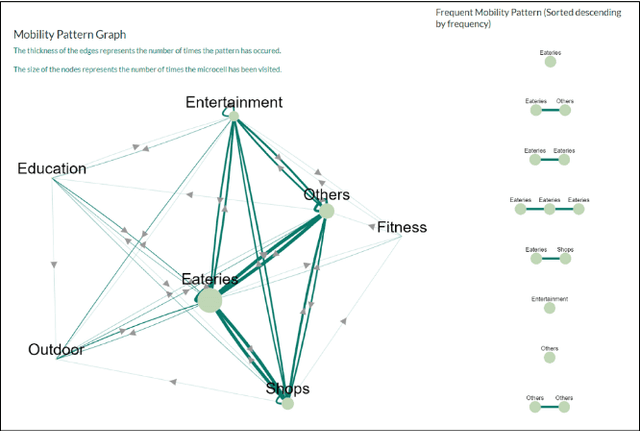IMAP: Individual huMAn mobility Patterns visualizing platform
Paper and Code
Sep 08, 2022

Understanding human mobility is essential for the development of smart cities and social behavior research. Human mobility models may be used in numerous applications, including pandemic control, urban planning, and traffic management. The existing models' accuracy in predicting users' mobility patterns is less than 25%. The low accuracy may be justified by the flexible nature of the human movement. Indeed, humans are not rigid in their daily movement. In addition, the rigid mobility models may result in missing the hidden regularities in users' records. Thus, we propose a novel perspective to study and analyze human mobility patterns and capture their flexibility. Typically, the mobility patterns are represented by a sequence of locations. We propose to define the mobility patterns by abstracting these locations into a set of places. Labeling these locations will allow us to detect close-to-reality hidden patterns. We present IMAP, an Individual huMAn mobility Patterns visualizing platform. Our platform enables users to visualize a graph of the places they visited based on their history records. In addition, our platform displays the most frequent mobility patterns computed using a modified PrefixSpan approach.
 Add to Chrome
Add to Chrome Add to Firefox
Add to Firefox Add to Edge
Add to Edge